
Best framework for to develop fast, scalable, and profitable mobile applications.
Mobile applications have become an indispensable part of everyone’s life. If we explore
or
There are millions of applications listed, serving almost every sector of the business world.
However, the biggest irony of this mobile app world is that not every app is appreciated by consumers due to splurge of applications available for them. So, how can we make a difference from others? Well, the answer is quite simple, we need to choose the best technology and mobile app development framework to support the design and development process.
In this post, I shall be discussing the leading 15 mobile application frameworks available that can help you grow and sustain your business needs in the upcoming years. To know more, let’s read ahead
1. Flutter
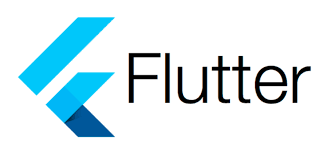
Presented by Google, Flutter is a powerful SDK that allows developers to build natively compiled mobile applications. A single codebase can be used to build apps across multiple platforms including web, desktop, and mobile. Presently, Flutter is actively used by 100s of business owners to get powerful mobile applications.
Key Features
Fast development
Flexible and expressive UI
Native performance
Single codebase for cross platform
Native performance on both Android and iOS
Flutter offers you hot reload that allows you to easily and quickly experiment UIs, features, and bug resolutions. Exploiting this mobile app development framework helps to impress your customers with rich motion APIs, appealing Cupertino widgets (iOS-flavor), Material design, smooth natural scrolling, and more.
2. React Native
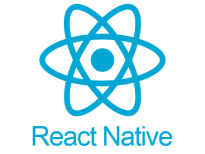
Created by Facebook, React Native is an open-source mobile application framework that is widely used to develop applications for mobile devices and other Android and iOS supported platforms. It is an easy to learn framework that combines the best portions of native app development using best-in-class JavaSCript library.
Key Features
Seamless cross-platform
Facebook community support
High-performance apps
Faster deployment times
Budget-friendly choice
One major attraction of building apps with this mobile application development framework is that it doesn’t compromise on UX. Moreover, the developers can use a single codebase for both iOS and Android applications. Code reusability, 3rd party compatibility, ease of maintenance, optimal performance, etc. are some other advantages of using React Native.
3. Xamrine
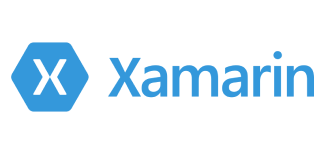
Owned by Microsoft Corporation, Xamarin is an open-source and free-to-use mobile app development framework. Basically, Xamarin extends .NET platform and tools to develop apps for Android and iOS platforms. You can build both native and cross-platform mobile applications with Xamarin for both Android and iOS platforms.
Key Features
Highly performant apps
Open-source and free
Great community support
Easy API integration
Cost-effective and fast development time
With Xamarin, the developers will get Native UI elements, and other requisite tools and libraries essential for creating rich user experiences. Apart from this, Xamarin extends a development ecosystem with API, backend, components, and others. Some popular mobile applications built over Xamarin include Storyo, OLO, and Alaska Airlines.
4. Ionic
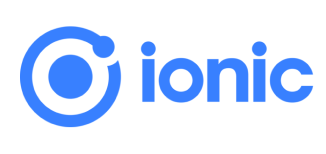
Released in 2013, Ionic is a popular open source framework that is widely used to develop hybrid mobile applications. It offers you a rich library of over 120 native plugins and a full native SDK required to build impressive user experiences. This framework utilizes technologies like JavaScript, HTML, and CSS to build cross-platform mobile apps.
Key Features
Numerous built-in UI components
Own command-line interface
Cordova-based and Ionic native packages
Platform independent
Fast application development
Ionic is a free-to-use framework that offers mobile-optimized UI components, tools, gestures to build highly interactive applications swiftly. Its beautiful and reusable UI components allow developers to sustain a seamless UX across multiple platforms while writing code once and running anywhere.
5. Adobe PhoneGap

Adobe PhoneGap is the best framework for mobile app development. It is open-source that allows developers to utilize languages like JS, HTML5, and CSS3 to build powerful cross-platform applications. Any person who is familiar with web technologies can easily exploit PhoneGap to work in their favor.
Key Features
3rd party tools and plugin library
Reusable code
No hardware configuration dependency
Cross platform compatibility
Powerful support community
Additively, PhoneGap extends its support via desktop and mobile apps to boost your mobile app development platform. You can also leverage its PhoneGap build feature that allows you to cut down the pain of compiling app locally. Wikipedia and Buildr are two popular mobile applications that are developed over PhoneGap.
6. JQuery Mobile

Written in JavaScript, JQuery Mobile is a touch-optimized HTML5-based user interface system, specifically designed to build responsive apps that are accessible on mobile devices and tablet/desktop devices. “Write less, Do more” is the core of this mobile app development framework.
Key Features
Fully responsive
Multiple add-on plugins
Robust theming framework
Lightweight
Multiple device and platform support
This cross platform mobile app development framework is built on JQuery core and holds ThemeRollar to render highly customizable themes. Moreover, this best mobile app development framework helps you to build branded applications. Untapped and veev are two promising applications built over this framework.
7. Mobile Angular UI
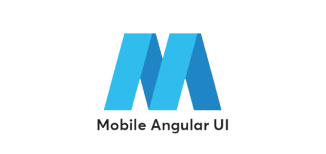
Mobile Angular UI framework allows you to developHTML5applications for mobile platforms, with AngularJS and Bootstrap. Just like JQuery Mobile, it is a mobile UI framework that is essential to create responsive and performant mobile applications. Anyone familiar with Twitter Bootstrap and AngularJS can easily exploit this framework in favor.
Key Features
No jQuery dependencies
Bootstrap 3 syntax
Open source tool
Cross browser compatibility
Fully responsive
Hotelier News and Gunks are two popular mobile apps built over Mobile Angular UI framework. With this framework, you will get crucial mobile components, sidebars, overlays, top and bottom navbars, and more. One major attraction is its ability to take an existing web or desktop application to work on mobile devices.
8. Framework 7
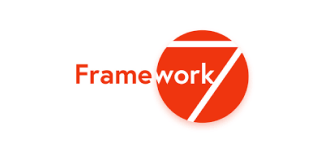
A free and open source mobile application development framework used by developers worldwide. Exploiting this framework, you can build native looking and full-featured mobile (iOS and Android) and web applications in no time. Paired with external tools such as NW.js and Electron, you can build native desktop apps.
Key Features
Easy to customize and maintain
Regular and powerful updates
Rich in-built ecosystem
Highly active community
Variety of UI elements and widgets
With Framework 7, the developers get an amazing set of ready to use elements like action sheet, dialogs, tabs, layout grid, popover, preloader, cards, form elements, popup, and many more. Apart from vanilla JS library, Framework7 is well-equipped with Vue.js, Svelte, React components to impose simplicity and power in your applications.
9. Corona SDK

Corona SDK or Solar2D is a cross-platform, open source, and free-to-use development framework, suitable for building mobile applications and games. Using Corona SDK, developers can build applications for both desktop and mobile platforms.
Key Features
Powerful and lightweight scripting language
Plethora of plugins
Fast development process
Robust API support
Huge developer community
Some famous mobile apps built over Corona SDK are inclusive of Zip Zap, Designer City, and Beasts Battle 2. With Corona SDK, you can create a single application while publishing it to multiple platforms covering iPhone, iPad, Android tablets and phones, Mac, Windows desktop, Amazon Fire, Apple/Android TV, and Fire TV.
10. Intel XDX
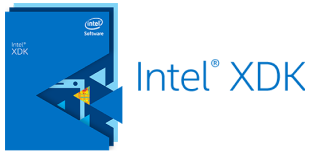
Intel XDK is a cross-platform mobile app development environment to create apps for smartphones and tablets, using HTML5 and JavaScript. The web developers who are familiar with JS, CSS, and HTML can easily use Intel XDK to build comprehensive mobile applications.
Key Features
One-step app development solution
In-cloud build system
Multiple OS support
Single code base
Easy learning curve
With Intel XDK, developers get a perfect blend of developing, debugging and testing tools that eventually increase the developer’s productivity. The time invested in switching between different tools is cut down. One source code is compatible across multiple platforms.
11. NativeScript
NativeScript is a free and open source mobile application development framework to build native Android and iOS applications. Powered with advanced scripting languages like Angular, TypeScript, Vue.js, and JS, NativeScript is a great choice for creating native mobile applications.
Key Features
Extensible
Easy to learn
Native UI experiences
Free and open source
Single codebase for cross platform
With NativeScript, developers build UI with HTML-like syntax, write app logic with popular JavaScript/Angular while styling it with CSS. To ease out the developers hustles, there are multiple tutorials and docs, blogs to widen your knowledge about NativeScript, and marketplace for numerous open source app templates, sample code, and plugins.
12. Swiftic
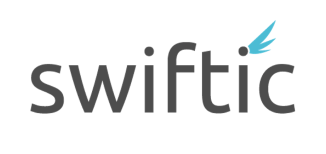
As the name suggests, Swiftic is the DIY mobile app maker specifically for iOS platform. This framework is fast, easy to use, and meant for everyone irrespective of their technical background. You can create, publish and grow with your custom app in no time with Swiftic.
Key Features
App promotion and social media support
App publication assistance
Easy 3rd party integration
In-app coupons and loyalty programs
Push notifications
With Swiftic, you can explore an easy to navigate UI with a convenient option of 30 days money-back guarantee applicable on all of its plans. Moreover, six months service is free with Swiftic. You can reward your customers as well as your business with this framework.
13. Onsen UI
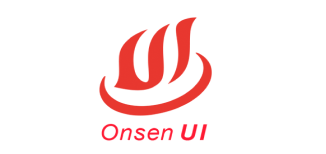
Onsen UI is an efficient and simple mobile application development framework to build hybrid and mobile web applications over HTML5. Its streamlined development setup allows you to experience a wonderful development ecosystem built over JS, HTML, and CSS.
Key Features
Ready-to-use components
Automatic styling
Single source code for both Android and iOS
Well-optimized performance
Easy to learn and use
To date, over 100 million mobile devices have been successfully carrying Onsen UI applications. Offcourse Golf and Giro D’ltalia are two popular applications built over Onsen UI.
14. Appcelerator Titanium
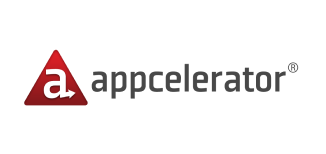
Appcelerator Titanium is a popular, open source , and extensible mobile app development environment to develop impressive native apps across multiple platforms including iOS, Android, and BlackBerry. By using a single codebase, developers can create custom and seamless user experiences.
Key Features
Multiple platform compatibility
Easy API integration
Code reusability
Quick development process
Powerful community support
This JavaScript-based SDK is currently being used by 100s of developers to build feature-rich applications. This framework is connected to the cloud so the developers can access code from anytime and anywhere.
15. Monaca
Built over Cordova and PhoneGap, Monaca is a leading mobile app development framework, which is cloud-based IDE. To use this framework, developers don’t even require to install anything as they can work directly with the browser. To support offline work, there is a desktop application and CLI tool available.
Key Features
Integration with Onsen UI
Remote cloud UI features
Amazing debugging experience
Free to use
Cloud-powered mobile app development
Drive2Chat, SmartEat, and ScanIt are popular mobile apps developed over the Monaca framework.
Final Words
After conducting thorough research, I have curated this detailed list of best mobile app development frameworks. Rest, it always depends upon the needs of your business and audience which framework works best for you.
If you are looking for custom mobile app development solutions, you can consult our
We at
Offer the best-in-class mobile app solutions built over state-of-the-art technologies and development standards.

